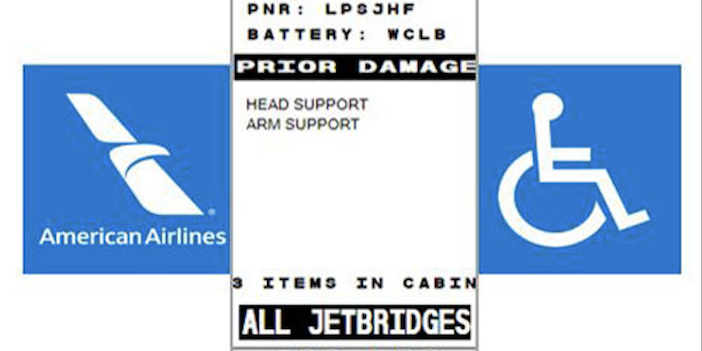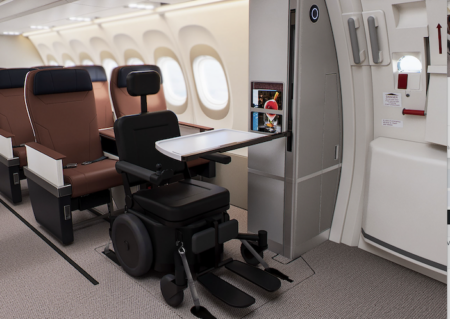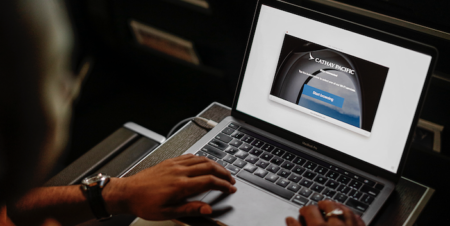American Airlines has become the first USA-based airline to launch an automated tag for mobility devices, as part of its work to improve wheelchair and mobility device handling across its network. The tags, developed in-house by the airline’s technology team, are now in use at the airports where American Airlines and its regional partners operate.
The automated tags replace the previous manual tags, and feature customer- and device-specific data including itineraries, delivery points, the weight of the mobility device and its battery type, and the number of items removed and taken on board. This additional information will be used to deliver more accurate and consistent information for team members when handling the mobility devices, and provide enhanced visibility of the devices throughout customers’ travel journeys.
 The automation also enables each device’s information to be more easily shared across frontline team members’ applications, ensuring team members have the right information at the right time.
The automation also enables each device’s information to be more easily shared across frontline team members’ applications, ensuring team members have the right information at the right time.
“American is committed to improving the travel experience for our customers who use wheelchairs and mobility devices,” said Julie Rath, American’s senior vice president of airports, reservations and service recovery. “Streamlining the check-in and tagging process is an industry-leading effort that will help us further improve how we handle wheelchairs for our customers who entrust us to transport their devices on their journey.”
The automated tags are the latest in a series of improvements American has introduced across its operations to deliver a more seamless travel experience for customers with wheelchairs and mobility devices, and to improve handling of these devices. The airline says its handling rate for mobility devices improved nearly 13% from the first half of 2023 to the first half of 2024.
The improvements include bringing in an external organisation to give in-person mobility device training to the airline’s airport customer service and customer operations team members and vendor partners, which supplements the web-based training delivered to all American airport team members.
American Airlines has also invested in its applicable airport infrastructure, with wheelchair movers deployed, and lifts being installed at the airline’s hubs and other airports with high mobility device traffic, all to help lower the risk of damaging mobility devices and of team members being injured.
American has also made it easier for customers to add and maintain wheelchairs and other mobility devices as part of their travel profiles. Starting this autumn/fall, customers can access their saved travel preferences, such as travelling with a mobility device or service animal, and they can apply their details to any upcoming trip when managing on aa.com. Enabling customers to manage these needs digitally helps ensure the airline has the necessary information to safety and securely transport devices.





